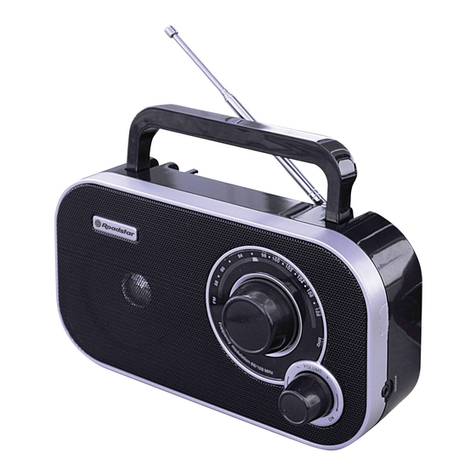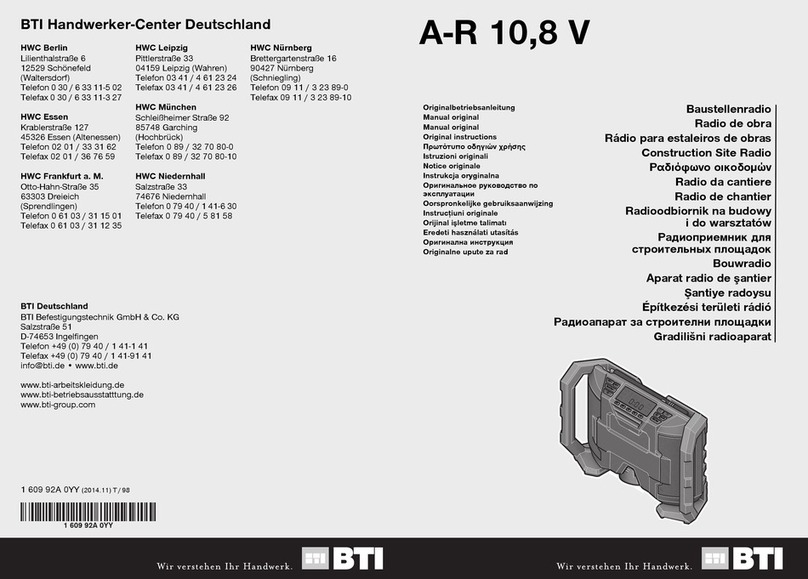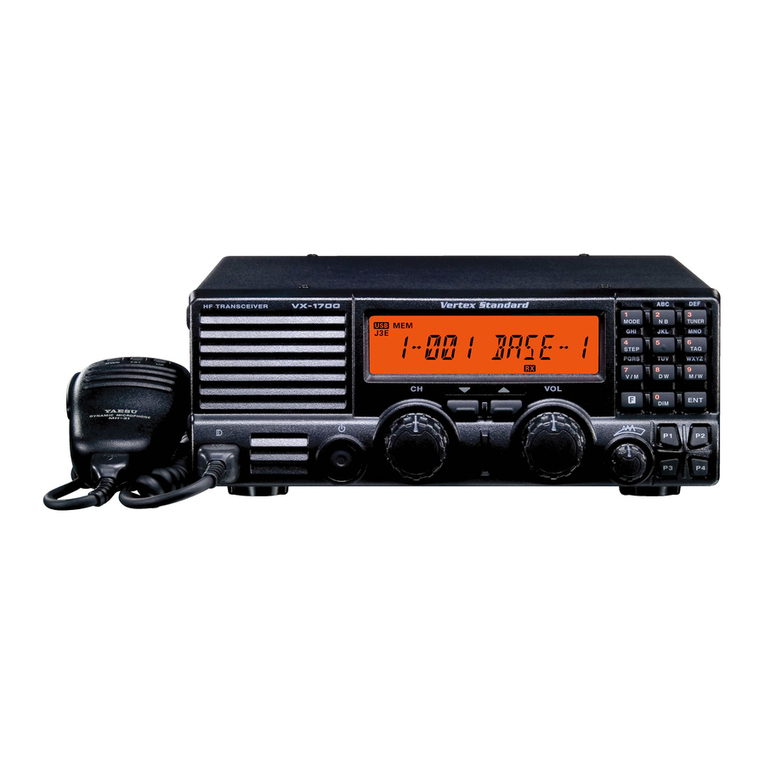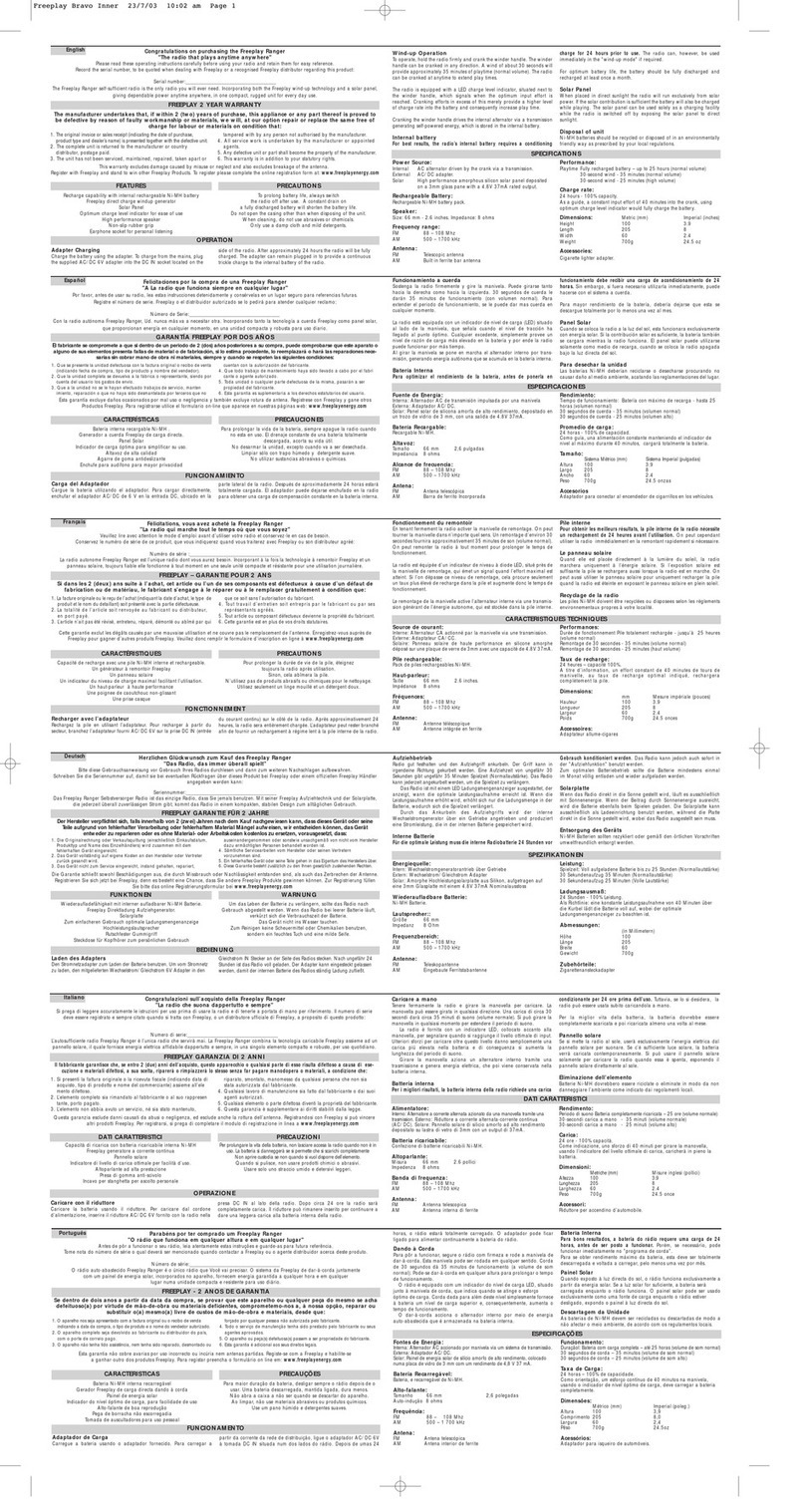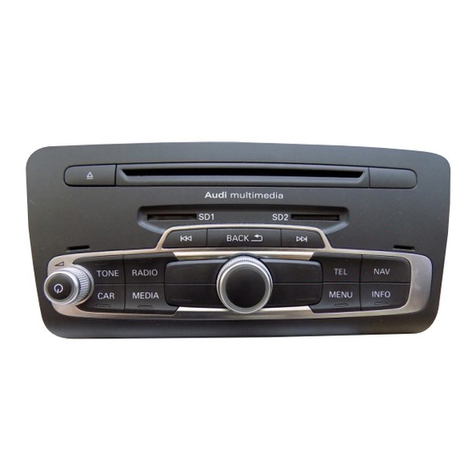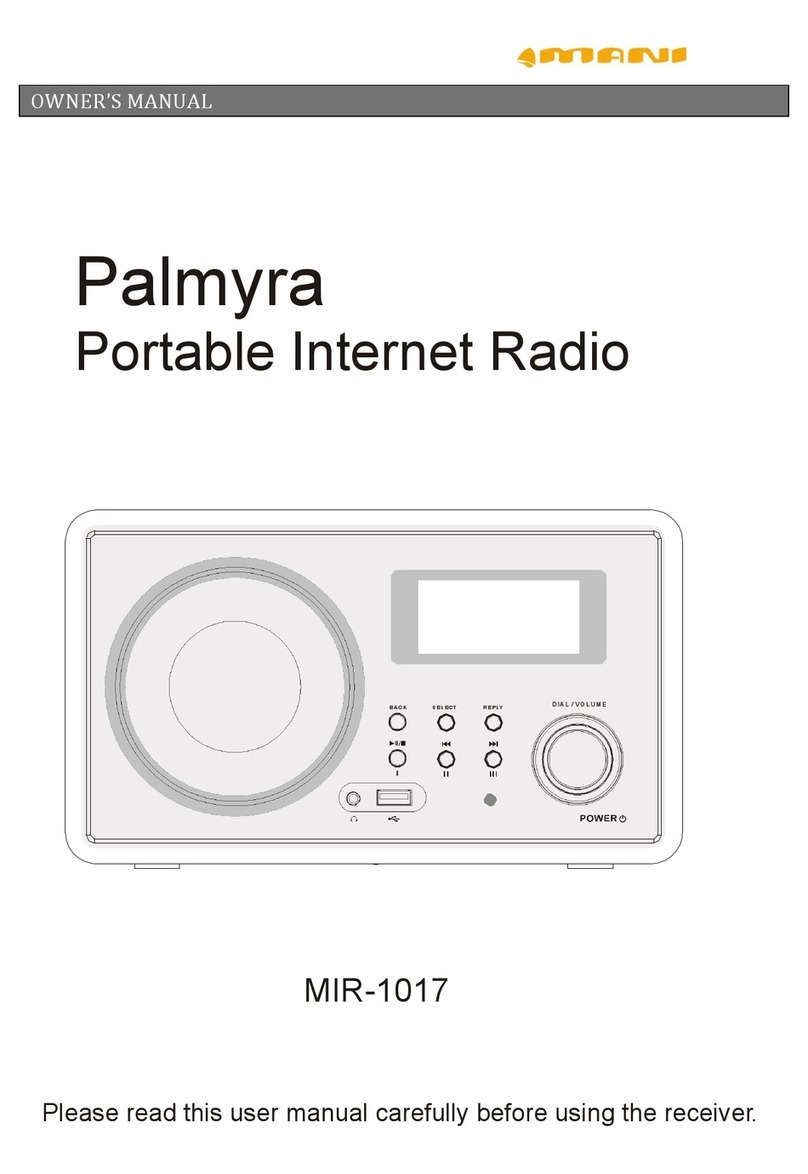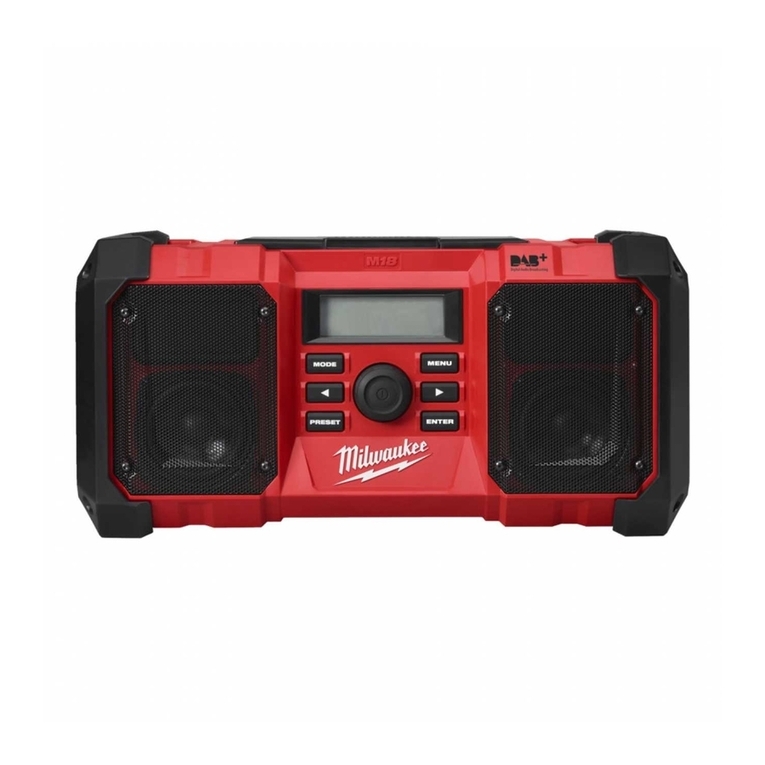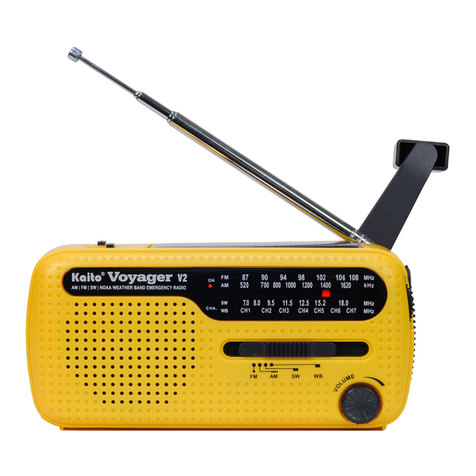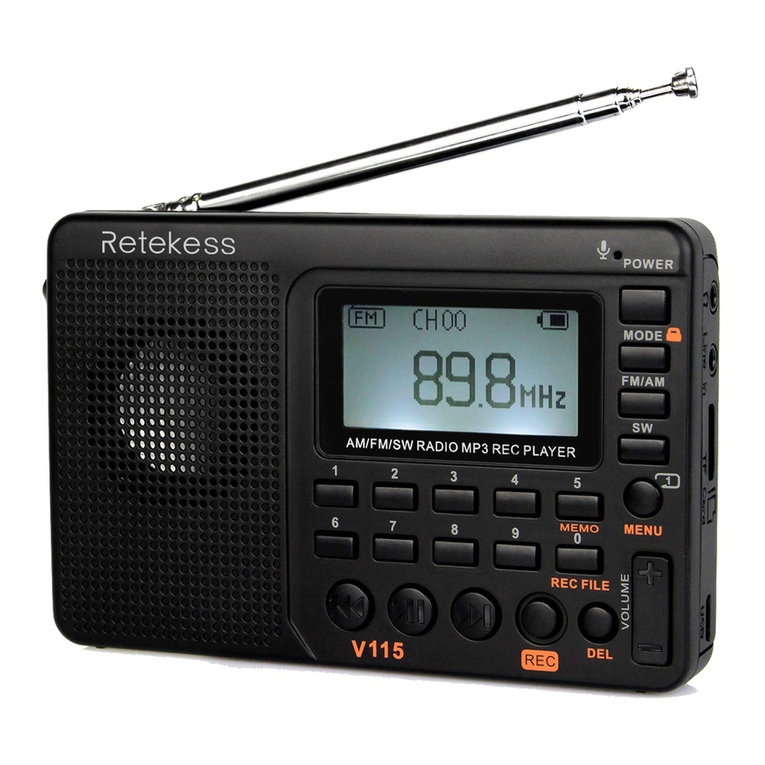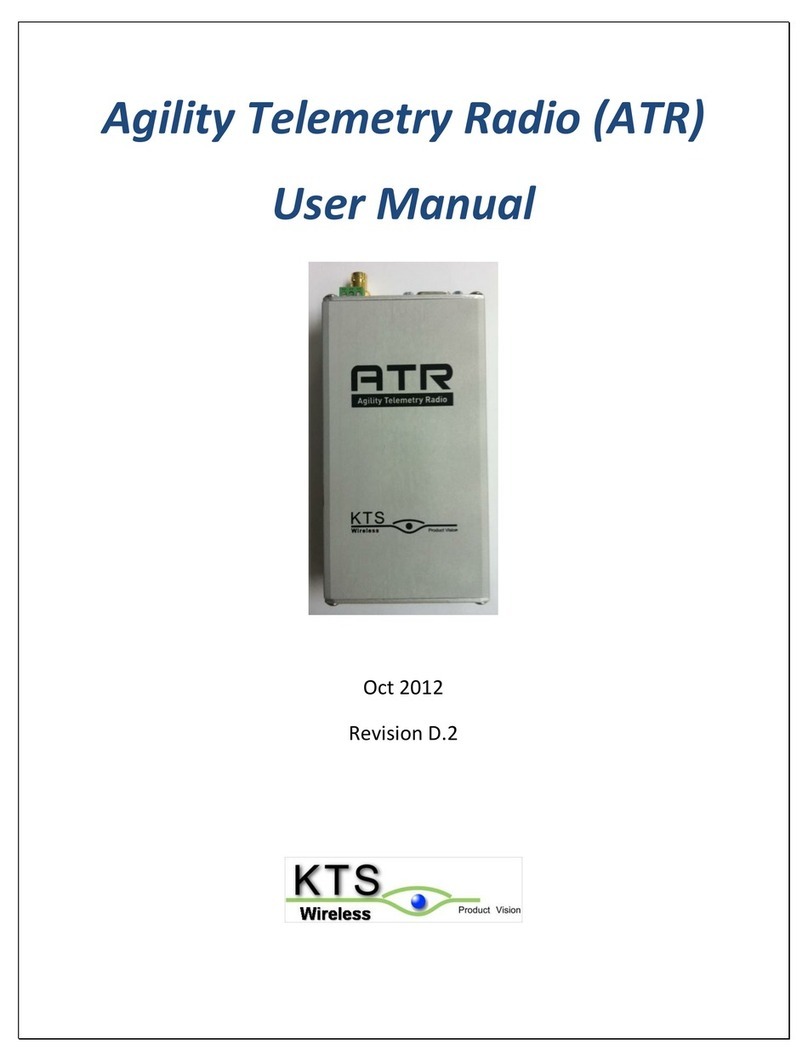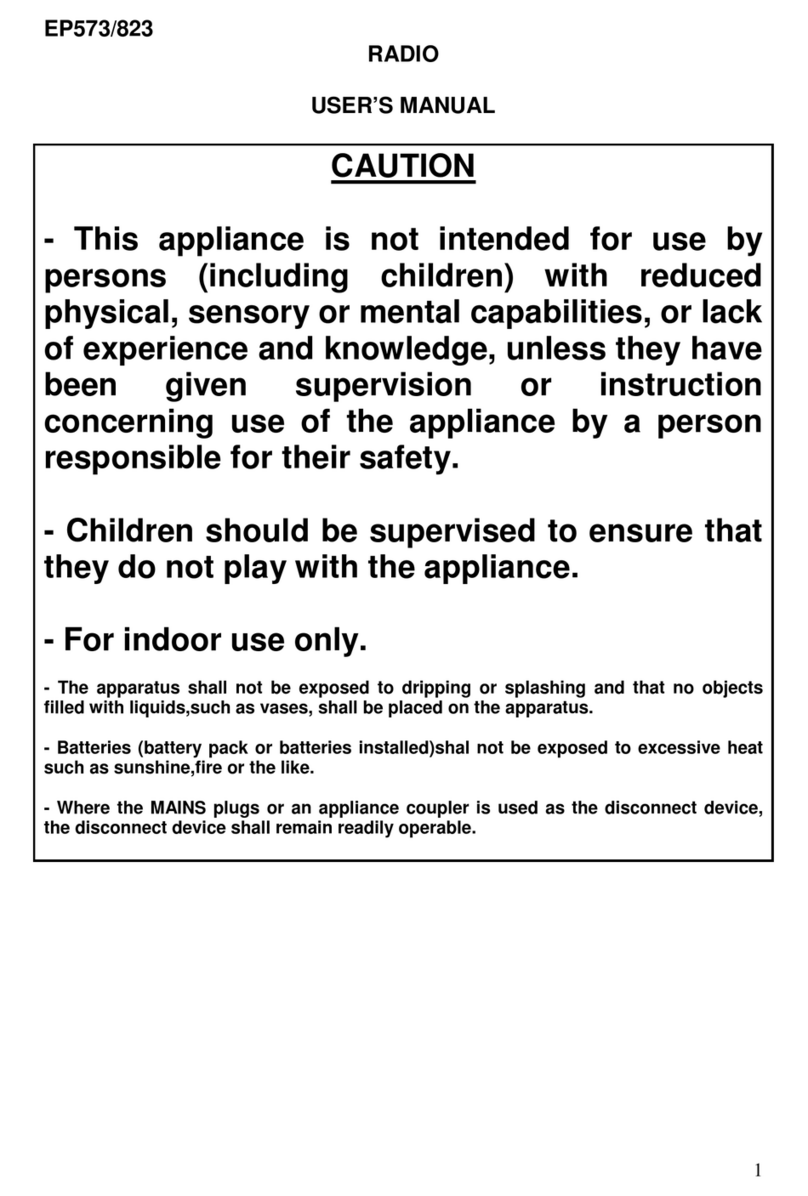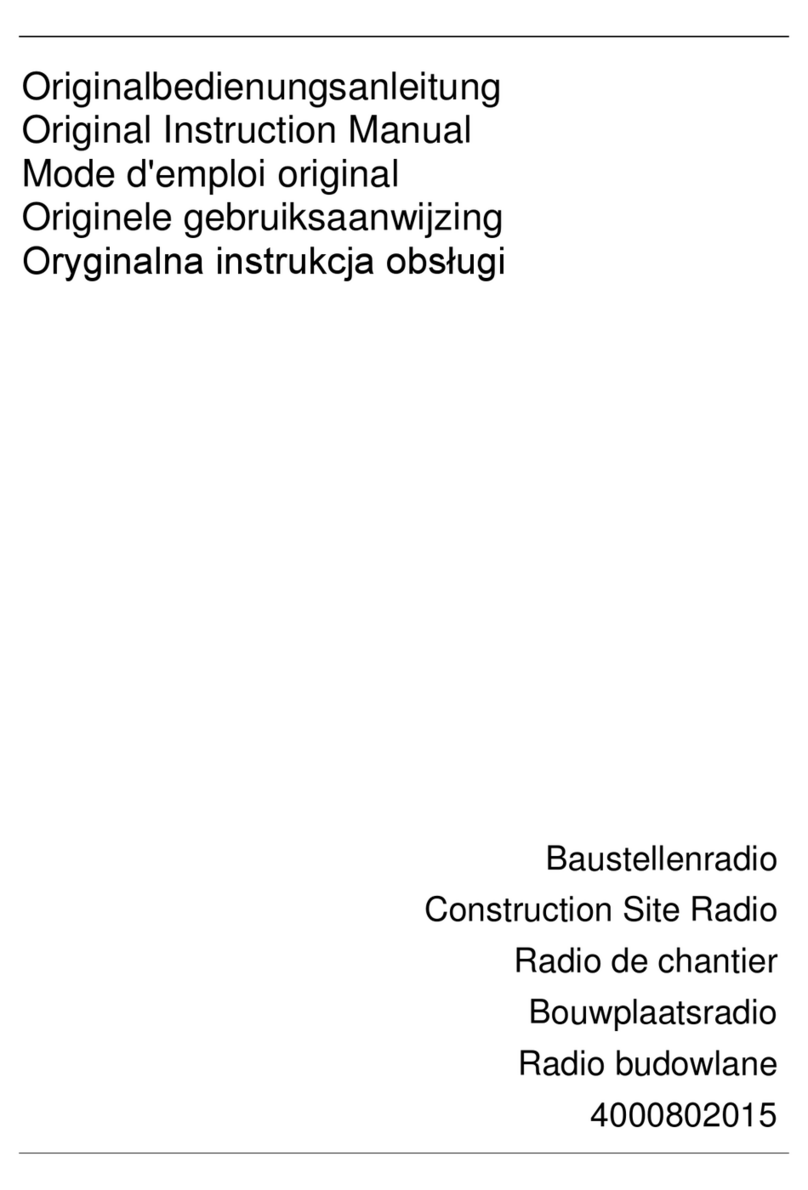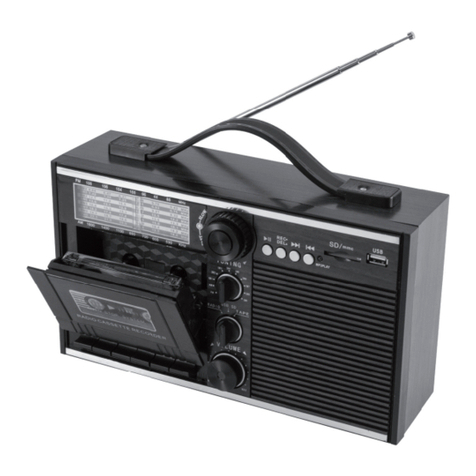Project XTAL User manual

Project XTAL Radio
Building a radio? In biology? How can that be?
We all love our electronic toys, radios, stereos, CD players, MP3 players, computers, DVD players, short wave
radios, amateur radio, TV’s, X-boxes, Play stations, VCR’s, cassette tape players, 8 track tape players, reel-to-
reel tape players, and record players. All these devices require electricity by either plugging the device into an
electrical outlet or by inserting batteries.
The radio you are about to build is an environmentally friendly radio. This radio is built from recycled parts. It
does not require batteries and it is not plugged into an electrical outlet. This radio will play forever for free!
How? It obtains all of its power from the transmitted radio wave.
Think about this, for as long as there are AM stations transmitting in the AM broadcast frequency range, this
radio will work. That could be 10, or 100 or more years from now. Be as creative as you want building this
radio, build it as neat or as unique as possible, keep it, and pass it off to your offspring, grand-offspring, or great
grand offspring. It is possible that this low-tech radio could outlive all of those electronic devices mentioned
above … and it will still work for free!
Xtal is the radio abbreviation for crystal. These radios are called crystal (xtal) radios because the original radios
used a crystalline mineral for the detector. The most popular mineral used is galena, followed by pyrite. Modern
crystal radios often use manufactured devices called diodes. Careful examination of a diode will reveal a tiny
hair-like structure coming in contact with a tiny crystal of germanium (see following pictures).
My classroom objectives -Biology (Ecology unit):
1. Build an environmentally friendly radio using only recycled components.
2. Develop a commentary on two issues about how this is an environmentally friendly radio.
Cross Curriculum Objectives:
1. English –Use concrete evidence to formulate a commentary about how this radio could tie in with the
crisis in the book Alas, Babylon.
2. Mathematics -Mathematical formulas are derived to calculate the amount of wire required to wind the
coil and the surface area of the capacitors. Use mathematical equations to determine the inductance,
capacitance and approximate frequency coverage of the radio.

Project XTAL Radio –Parts Acquisition
Rules:
1. No money can be spent on this project.
2. All parts must be recycled.
Parts:
1. insulated wire –30’ to 90’ –enamel or plastic coated wire
2. coil form –can be from paper towels, toilet paper, or PVC; 1” to 4” in diameter
3. two aluminum cans
4. aluminum foil
5. tape –clear mailing tape is best
6. detector -germanium diode –the “crystal” for the crystal (xtal) radio
7. board –8” X 8” is a good size –thick enough so screw/tacks do not penetrate to the opposite side
8. paper clips –ten
9. wood screws – 15
10. earphone or ear piece
All of the above parts must be acquired from something that would normally be thrown away. Go on a
scavenger hunt for the parts.
The wire for the coil must be insulated; using wire without insulation will render the crystal radio inoperable.
30’ to 90’ feet of wire is required to make the coil. Old electric motors, generators, alternators and transformers
are great sources for enamel-coated wire. Discarded speaker wire, lightweight power cords, and even the wires
striped from a computer keyboard cable are other sources of wire. If one complete length of wire is not
obtainable, it is ok to connect wires together, even if the size is slightly different. When connecting different
wires together for the required length it should be of the same type, all enamel coated or all plastic covered.
Pictured below is a transformer on the left and a computer power supply on the right. The yellow arrows
indicate parts that contain usable wire.
The form for the coil is dependent on the wire type and size. Enamel coated wire 28 to 18 gauge requires a form
of 1 to 3 inches in diameter and plastic coated wire needs a form of 3 to 5 inches in diameter. The classic toilet
paper roll tube, used mailing tubes, and scrap PVC all do nicely for coil forms.

Aluminum cans, have your favorite beverage and use the can. The variable section of the capacitor can be
aluminum foil or even a slightly larger diameter can.
Germanium diodes look like a ¼” tiny glass cylinder with a wire protruding from each end. This is the “crystal”
for the radio. They will have a colored band on one end. Look for these in old broken transistor radios. Below
left are a couple of diodes photographed with the classroom stereoscope. The below right picture is the inside of
a diode. The “cat whisker” is on the left and the mounted germanium crystal is on the right.
The best place to procure the earpiece is from an old style telephone, not any that are cordless or have built in
answering machines. The low impedance earpiece used with modern portable radios, tape players, and CD
players do not work alone unless you can salvage the impedance matching transformer from the electronic
device. Certain pizo-electric buzzers from computer modem cards work . Some are found to have a high enough
impedance to work in the crystal radio circuit. Two are pictured in the bottom, center in the below, right picture.
HAPPY HUNTING!
Project XTAL Radio –Pictorial Diagram

The above is a pictorial diagram of the crystal radio to show the approximate physical placement of the
components.
Use a recycled board about 8” X 8” for mounting the components. Paper clips are used to make the antenna,
ground, and earphone connections to the radio. Paper clips are attached to the taps on the inductor for
connecting the antenna coupling capacitor (C2) made from an aluminum can and the diode (D1) to the inductor
(L1). The antenna coupling capacitor was needed because there is a 10KW station within 5 miles of the school.
Reducing the coupling to the radio and careful adjustment of the coil taps and the tuning capacitor (C1), also
made from an aluminum can, enables reception of several AM broadcast band stations in the Houston area. The
local station goes off the air at night and a student reported receiving stations up to 1000 miles away. His
antenna was a 100’ long wire wrapped around the yard high in trees. If a strong local station is not present, the
antenna coupling capacitor can be omitted.

Project XTAL Radio –Schematic Diagram
Key: capacitor -variable diode
inductor earphone
wires connected wires not connected
antenna ground
The above schematic diagram shows the electrical wiring of the crystal radio. Schematic diagrams are used by
people involved in the assembly and/or trouble shooting of electronic devices. The arrow on the coil represents
an adjustable connection to the coil.
Follow the flow of the signal through the radio with the schematic diagram. The radio wave is received by the
antenna, flows through the antenna coupling capacitor (C2) and then into the tuning circuit. The tuning circuit is
made of an inductor (L1) and a tuning capacitor (C1). Adjustment of the tuning capacitor (C1) selects the
desired station. The selected signal flows into the diode (D1) which functions as a detector. A detector separates
the audio signal from the selected radio signal. The audio signal flows into the earphone where electrical energy
is converted into mechanical energy. This particular mechanical energy is the sound waves received by our ears.

Project XTAL Radio –Assembly
Tools: Needle nose pliers knife sandpaper
wire cutters screw driver
Construction Procedures:
A variable capacitor is used in most AM/FM radios to tune in different radio stations. Changing the
capacitance will change the frequency of the tuning circuit. On most radios this will be the “tuning” knob or
“tuning” controls. A simple capacitor consists of two metal plates insulated from each other. The capacitor and
coil work together as a tuning circuit to select the desired station for reception. A second variable capacitor may
be needed to regulate the coupling of radio signals from the antenna to the tuning circuit. Construction for both
capacitors is the same. The tuning capacitor is designated as “C1” and the coupling capacitor is designated as
“C2” in the schematic diagram.
Building the capacitor:
1. Cut the paper or transparency film to a
size of 8 ¾ inches long by 5 inches wide.
2. Cut a piece of foil to a size of 8 inches
long by 2 inches wide
3. Carefully attach the foil to the
transparency 1 ½ inches from the bottom
of the transparency using the clear
mailing tape BUT leave ½ inch of one
end uncovered.
4. Cut a 10” piece of hook-up wire, remove
1” of insulation from each end and tape
one end of the hook-up wire to the
uncovered end of the foil. Make sure
there is a good connection between the
section of bare wire and the foil.
5. Wrap the foil-transparency assembly,
foil side out, snuggly around the can and
secure with the tape. The assembly will
slide up and down over the can
functioning as a tuning capacitor.

The coil, in conjunction with the capacitor, forms the tuning circuit for the radio. The coil is designated as “L1” in
the schematic diagram. Both the coil and capacitor, working together can separate the various stations. The
“perfect” coil that yields the best all-around performance is a “square” coil, one in which the diameter of the coil is
approximately each to the length of the windings. Good performance can be obtained with coils of many differing
dimensions. The ideal value of inductance of the coil for the AM broadcast band is 240 µh. Inductance values from
160 µh to 350 µh will also work but part of the tuning range of the radio may be outside the AM broadcast band.
Winding the coil –generalized instructions for a toilet paper form and 28 to 22 gauge enamel coated wire:
1. Punch two holes at the end of the paper toilet
form as shown and thread 10” wire through
the holes.
2. Wind 90 turns of wire around the form and
tap as follows: 5 turns, 10 turns, 15 turns, 30
turns, 45 turns, and 60 turns. Make the taps
by twisting ½ inch of the wire to leave a loop
at the end.
3. Punch two holes at the other end of the paper
toilet form and thread the wire through to
anchor the turns. Leave 10” and cut the wire.
4. Use the sandpaper or knife to remove
insulation from the wiretaps. Remove an inch
of insulation from the wire ends. The coil is
complete. The coil to the right follows the
above instructions.
5. Adjust the steps above to suit different size
coil forms.
The coil below uses 60 turns of #18 plastic coated stranded wire wound on a mailing tube with a 4.2” outside
diameter. The taps are at turns number 5, 10, 15, 30, and 45. The plastic-coated wire is not as stiff as the enamel
wire so a wood dowel is used as an aid for tap formation. Get the formulas for calculating the inductance of the coil
from your math instructor. Use this number for inductance in addition to the capacitance to solve for the tuning
range of your radio.

Final Radio assembly:
1. Place L1 (inductor) to the rear of the board as shown in the pictorial diagram and fasten with thumbtacks or
wood screws. Connect a wire from each tap on L1 to a paper clip on the board as shown in the pictorial.
2. Layout the paperclips for the antenna connection, ground connection and earphone as shown in the pictorial
diagram. Use wood screws to attach them to the board but do not completely tighten.
3. Connect the wire from the ground (“B”) end of L1 to the paperclip for the ground connection. Connect a
length of hookup from the ground clip to the left earphone paperclip as shown. Tighten the screw for the
ground clip.
4. Fasten the can end of C1 (tuning capacitor) to the front right corner of the board with a screw through the
bottom of the can. Before the screw is tightened, connect a 6” length of hook-up wire to the can end of C1.
Connect the other end of this wire to left earphone paperclip as shown. Tighten the screw for left earphone
clip.
5. Connect the wire from the foil of the C1 to end “A” of L1.
6. Connect the glass end of D1 (diode) to second tap from the “A” of the coil and connect the end with the
colored band to the right earphone paperclip. Tighten the screw for the right earphone clip.
7. Fasten the can end of C2 (antenna coupling capacitor) to the front left corner of the board with a screw
through the bottom of the can. Before the screw is tightened, connect a 6” length of hook-up wire to the can
end of C2. Connect the other end of this wire to antenna paperclip and tighten the screw for the antenna
clip.
8. Attach the foil end of C2 to the antenna clip to first paperclip from the ground end of L1.
Operation:
1. Connect a 100’ wire (or as long as you can get) to the antenna clip and connect a wire from a ground rod
to the ground clip on the radio. If a ground rod is not available lay 50’to 100’ of wire on the ground as a
substitute for the ground rod.
2. Connect the earpiece the earphone clips and listen.
3. You should immediately hear a station, or perhaps two stations at the same time.
4. Slide the foil side of C1 up and down to tune in one station at a time.
5. Experiment with different adjustments of the diode tap, antenna tap and tuning capacitor tap to receive
different stations.
The function of the antenna tap on the coil is to provide for the maximum transfer of energy from the antenna to the
tuning circuit. The function of the detector tap is to provide a maximum transfer of energy from the tuning circuit
to the detector. The function of the antenna coupling capacitor is to regulate the amount of energy from the antenna
to the tuning circuit. If the crystal radio is operated near a powerful station, adjustments of the taps can reduce the
amount of energy from the nearby station so distant stations (DX) can be received.
Trouble shooting -if the radio does not work:
1. Check for wiring errors.
2. Check for complete removal of insulation on the wire at connection points, this is especially important
with enamel-coated wire. An ohm meter or continuity meter is very helpful for this task.
3. Check the connections; make sure they are secure.
Table of contents
